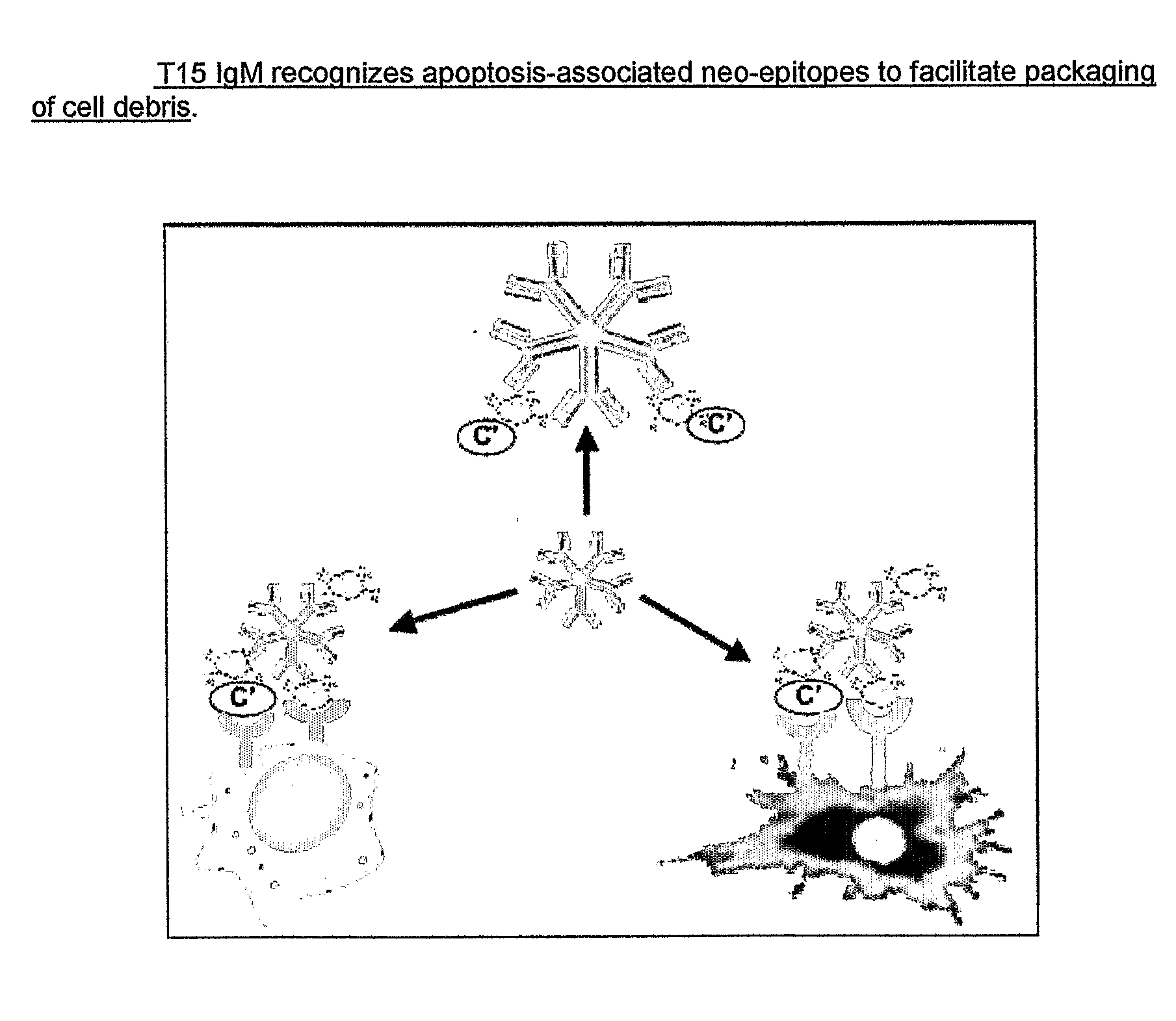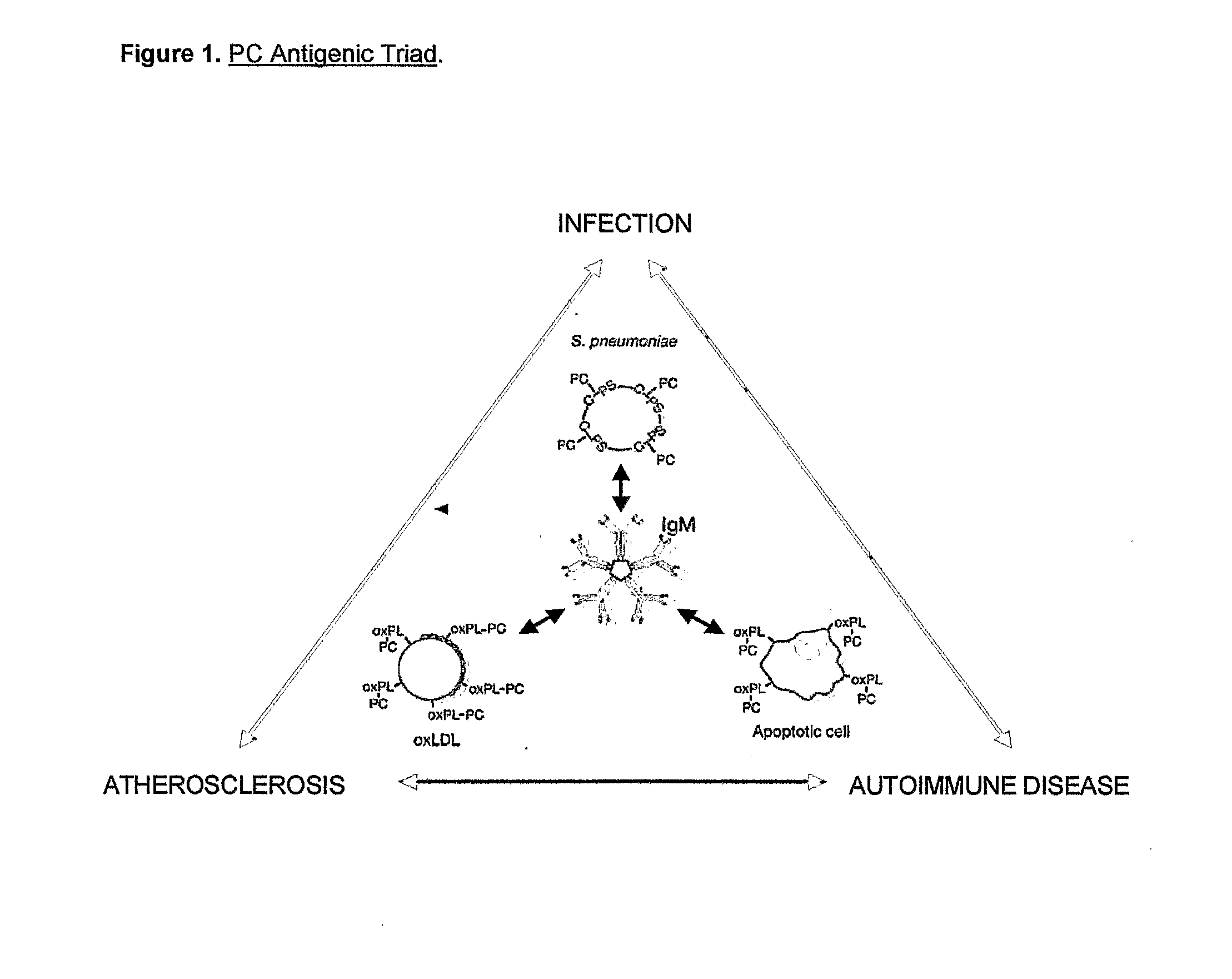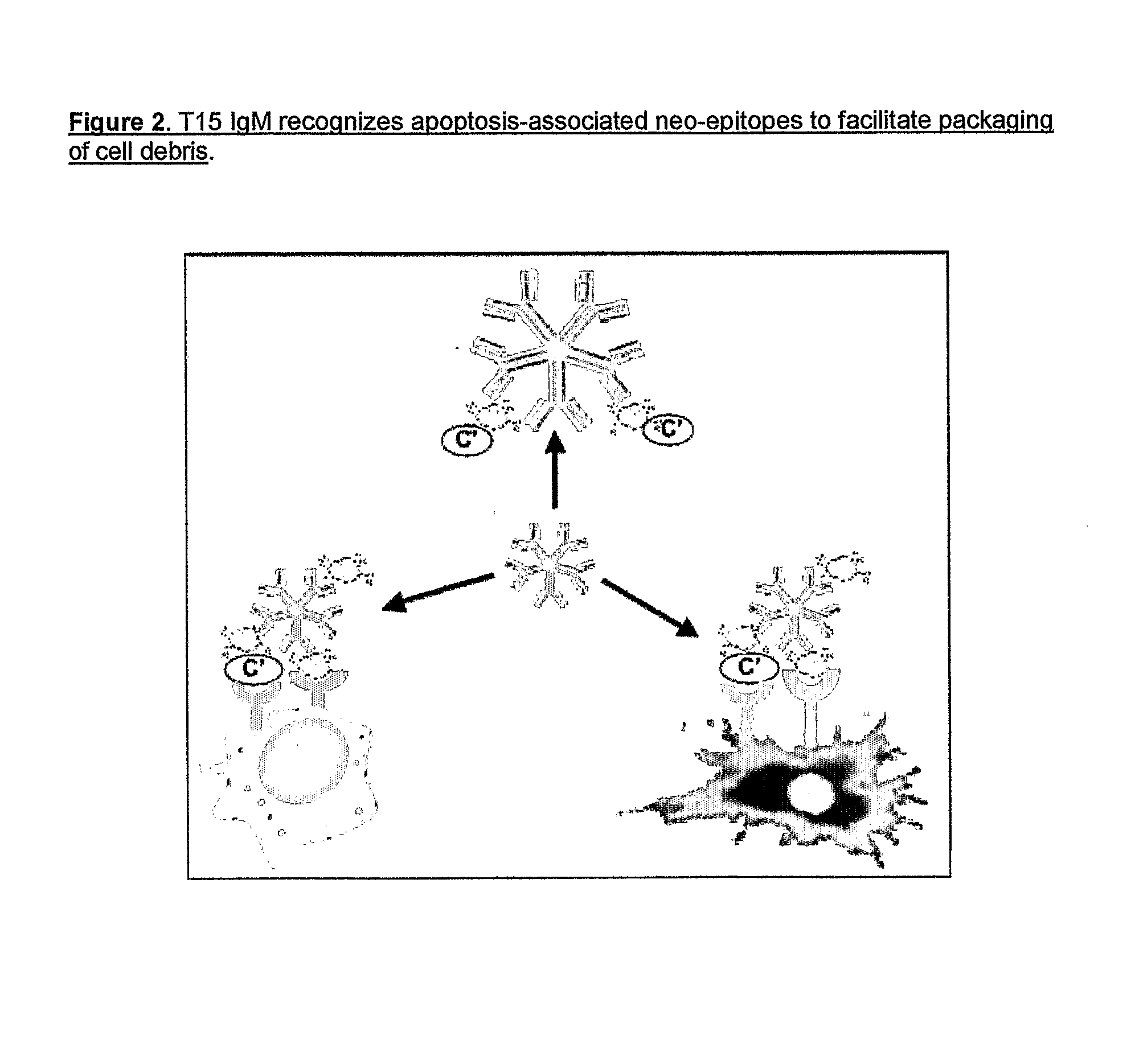Methods For Reducing the Symptoms of Autoimmunity and Inflammation Using Binding Proteins Against Antigens Exposed on Dead or Dying Cells
a technology which is applied in the field of reducing the symptoms of autoimmunity and inflammation by using binding proteins against dead or dying cells, can solve the problems of increasing the risk of infection, cell components of immune disorders can induce inflammation within the body, and there has not been any reported evidence of a practical therapeutic agent. to achieve the effect of reducing symptoms
- Summary
- Abstract
- Description
- Claims
- Application Information
AI Technical Summary
Benefits of technology
Problems solved by technology
Method used
Image
Examples
example 1
Development of In Vivo Autoimmune Disease Model Systems to Test Protective Properties of an T15 IgM Antibodies
[0135]To test the effect of T15 IgM anti-PC Ab infusions on autoimmune pathogenesis, the lupus mouse model was used (NZWxBXSB)F1 (WXF1), which represent the progeny of male BXSB mice bred to female NZW mice purchased from a commercial source (Jackson Labs), which develops anti-phospholipid syndrome, autoimmune thrombocytopenia, and accelerated mortality from glomerulonephritis. These mice also develop classic IgG anti-nuclear antibodies against anti-native (ds) DNA, and anti-cardiolipin antibodies, and are also prone to accelerated atherosclerosis. For these investigations, the B cell hybridomas for the IgM antibodies were grown under serum-free conditions in hollow fiber bioreactors, and highly purified, endotoxin-low or -free antibodies were produced and then concentrated, under contract with a commercial vendor (National Cell Culture Center, Minneapolis, Minn.).
Increased ...
example 2
T15 IgM Enhances Complement Deposition on Dying Cells and Enhanced Apoptotic Clearance
[0139]To best test and quantitatively measure the properties of antibodies for their potential in vivo protective properties, a robust and relevant experimental system was developed to assess how a specific monoclonal IgM may affect the molecular and cellular mechanisms responsible for apoptotic clearance. muMT− / − mice are genetically manipulated mice that were previously made with homozygotic knockouts of an exon in the constant region of the immunoglobulin (Ig) mu heavy chain gene55. This targeted mutation blocks B cell development at a B-cell precursor stage, so muMT− / − mice have no mature B cells and no circulating Ig, although other facets of their immune systems are not directly affected (47). Therefore, as there are no endogenous circulating immunoglobulins (Igs) to affect assays, a defined Ig sample can be introduced into the muMT− / − mouse and relevant biologic properties directly assessed....
example 3
IgG Antibodies from the pIGG Vector Display Bind PC with High Affinity (FIG. 9) and Recognize Dead and Dying Cells by Flow Cytometry (FIG. 10)
[0158]To assess the binding properties of recombinant T15 IgG antibodies, produced using the pIGG expression vector that contains cloned T15 variable regions and cloned antibody constant regions, a solid phase immunoassay was first performed. Herein, ELISA wells were coated with PC conjugated to bovine serum albumin (PC-BSA), that were then blocked and Ig samples of interest added in replicate and using serial dilutions. As all recombinant IgG contained mouse kappa light chains, the levels of binding in these assays were determined by subsequent development with an anti-mouse (ms) κ light chain immunoglobulin (Ig) specific detection reagent. The positive IgG control was PCG1-14, which is a mouse IgG antibody from a cell line generated by immunization with PC-KLH. For the negative control, the MOPC21 is an IgG of irrelevant binding specificity ...
PUM
| Property | Measurement | Unit |
|---|---|---|
| time | aaaaa | aaaaa |
| density | aaaaa | aaaaa |
| affinity | aaaaa | aaaaa |
Abstract
Description
Claims
Application Information
 Login to View More
Login to View More - R&D
- Intellectual Property
- Life Sciences
- Materials
- Tech Scout
- Unparalleled Data Quality
- Higher Quality Content
- 60% Fewer Hallucinations
Browse by: Latest US Patents, China's latest patents, Technical Efficacy Thesaurus, Application Domain, Technology Topic, Popular Technical Reports.
© 2025 PatSnap. All rights reserved.Legal|Privacy policy|Modern Slavery Act Transparency Statement|Sitemap|About US| Contact US: help@patsnap.com



